#InConversation with Gabriel Gomes
By Sanjana Srinivasan | Sep 14 2023 · 10 mins
Gabriel Gomes is a Brazilian visual artist with an interest in afrofuturism, cyberpunk and queerness. Through layers and non-figurative forms, the artist challenges the idea of so- called socially normal behaviours and patterns, by creating fantasy pieces that portray the multi-complexities of human behaviour. Here, Gabriel speaks to Sanjana about their practice.
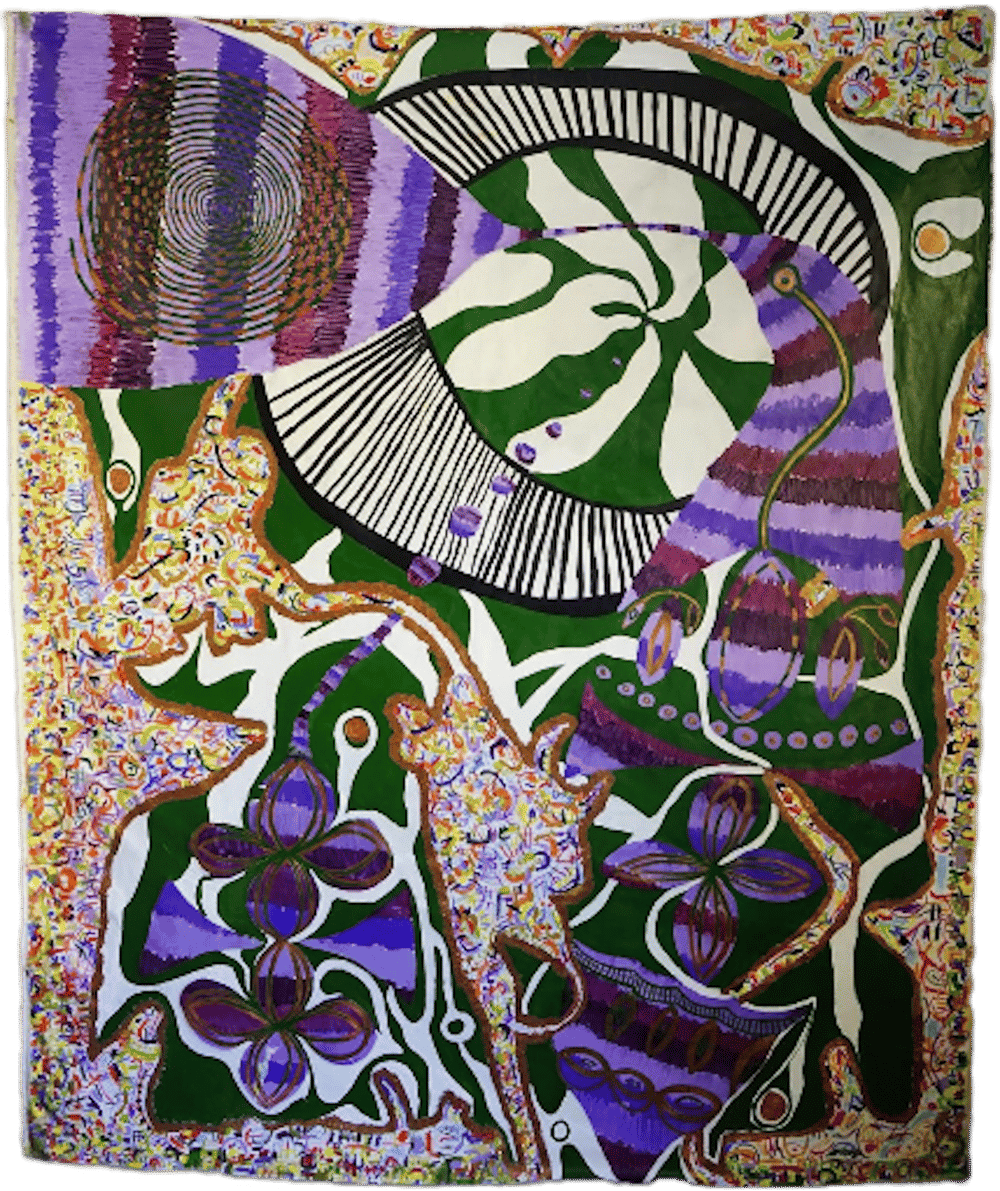

Antenas e Cordoes Umbilicais, 2022


Cadência Abissal, 2023
If you ask me about how everything began...I have always had an abstract way of expressing myself. This abstract perspective has greatly influenced how I relate to the role of an artist and the act of creating art. I find a strong resonance with the ideas of bell hooks, particularly when she discusses queerness. If you're not familiar with bell hooks, she emphasizes (among other things) the ability and desire to challenge and change what has been imposed by the binary notions of what constitutes a man, a woman, right, or wrong. She highlights how queerness breaks free from rigid definitions and offers fresh perspectives for understanding society. It's as if we project these new perspectives onto our own bodies. I vividly remember the moment I heard hooks talking about this. I thought, 'Wow, this is also what it means to be an artist and to create art.' Abstract art, in particular, embodies this concept. It's like there's this inner world within us that sometimes only we can see in a certain way, and the desire to express it is almost like giving birth. Once you bring your art into society, it becomes a collective experience. When we put ourselves out there, breaking barriers, society is almost obliged to engage with, understand, and perceive things from the same viewpoint. It's a way of making myself clear, but art, for me, embodies all of this.
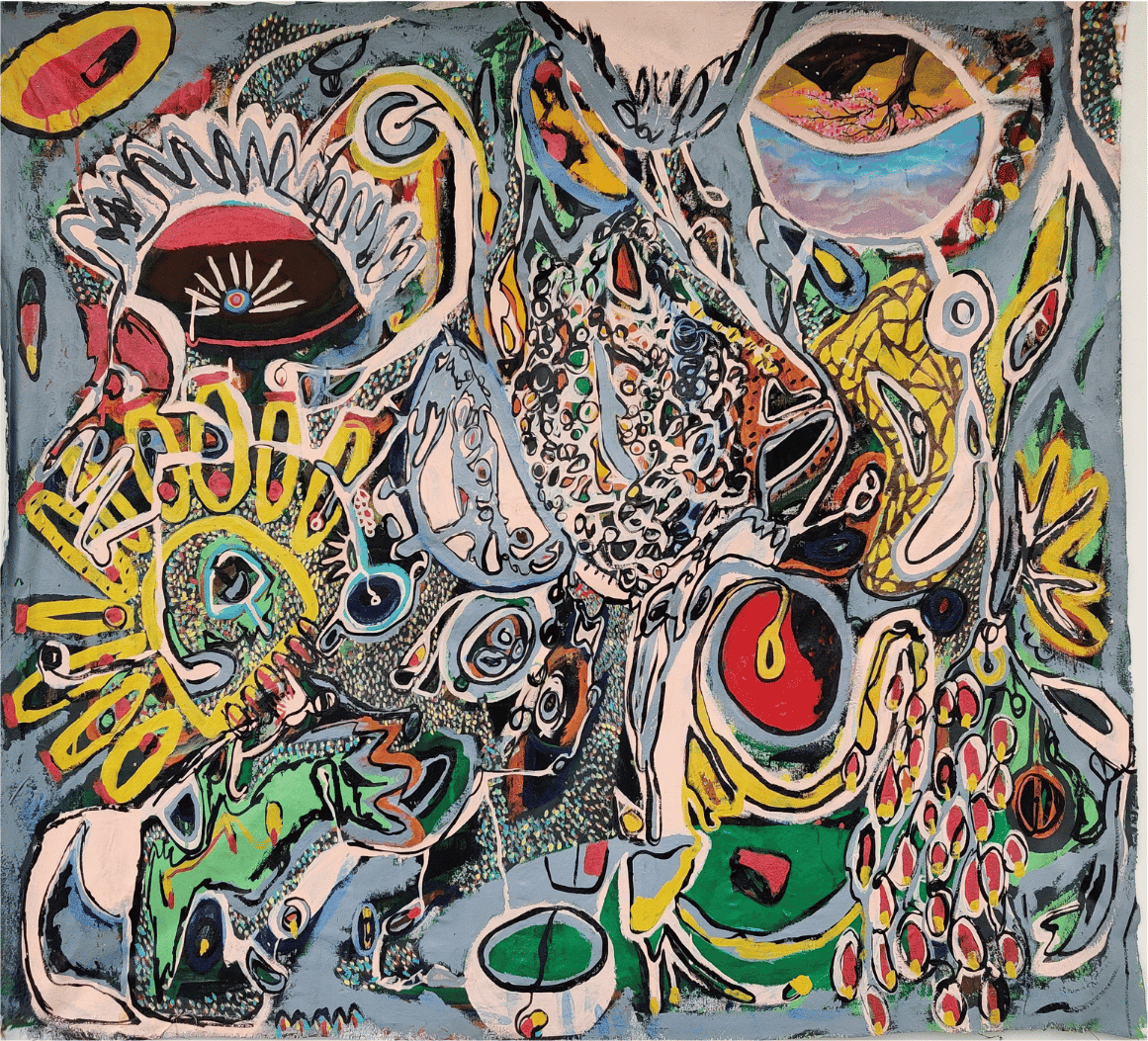

Sua alegria é sua personalidade desmascarada, 2022
Since childhood, I've had a unique perspective. I grew up in what we call 'periferias' or peripheral areas, akin to impoverished neighborhoods on the outskirts of society. At just five years old, I was already captivated by classical music and jazz because they were so distinct from the pop and traditional Brazilian music that surrounded me. I believe that I've been an artist at heart from a young age.
However, it was during my time in India that I decided to explore this artistic side further. I initially studied music, delving into classical music. Later, I started writing and even authored a short book with the guidance of a teacher. Subsequently, I ventured into photography and worked as a photographer for some time back in Brazil.
Then, I made the decision to travel to Europe and pursue a career in art therapy and play therapy. My first destination was Spain, and from there, I found myself living in a small city in Northern Ireland for seven months. It was an incredibly cold experience, some of the coldest days of my life, but also a remarkable one. I was studying art therapy and play therapy simultaneously and living with a wonderful family. It felt like a pivotal moment in my journey.
I learnt so much during my time in Northern Ireland. I practiced art therapy and play therapy with my host's daughter as part of a project associated with an institute from the USA specializing in Autism Spectrum. This approach was a revelation because it felt like a meditative way of working with children. Rather than pushing them to do things, we observed them closely. When they were ready to connect with us, we would propose therapeutic practices. This taught me the value of silence, observation, and understanding their emotions in those moments. I learned to be comfortable with discomfort and to avoid passing judgment, which was crucial in this line of work. Over the course of six months, I achieved significant progress. I fell in love with the practice of art therapy and play therapy. After completing the program, I began creating small drawings. I had a bunch of postcards from Spain with pens that contained acrylic paint. These pens allowed me to draw and paint with ease. Northern Ireland, where I lived, didn't offer much in terms of activities due to its small size. I would engage in art therapy sessions twice a day for one to one and a half hours each. After that, I had some training sessions lasting two to three hours, followed by free time. I spent a lot of time meditating, drawing, and playing music during those six to seven months. By the end of this period, I had covered two walls in my apartment, thanks to the paintings I had created. It made me realize that I truly enjoyed this artistic pursuit. The paintings were small, to begin with, mostly abstract portraits. I experimented with different shapes and color possibilities. A portrait would be a circle with a unique set of colors, and the hair could be something entirely different. Though I intended them to be portraits, they were essentially abstract paintings from the start. At the end of those six to seven months, I had two walls adorned with paintings, and I discovered my passion for painting.
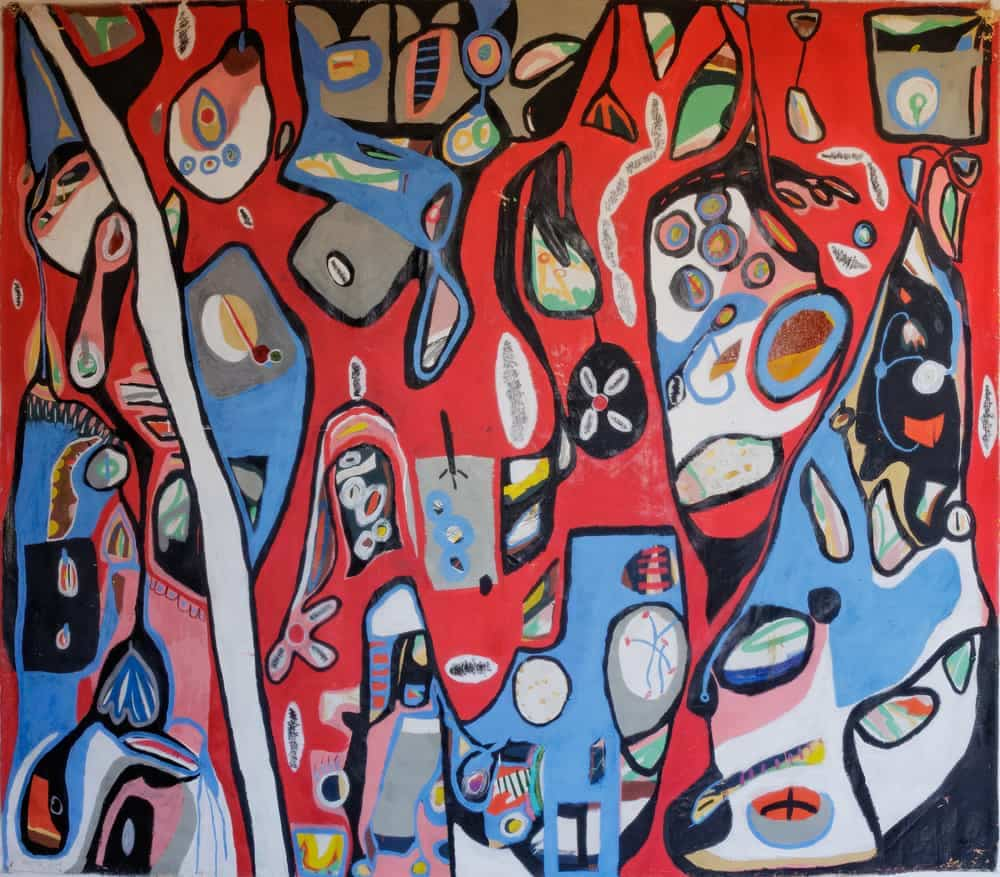

Ebulição dos caminhos que queimaram meus pés, 2021
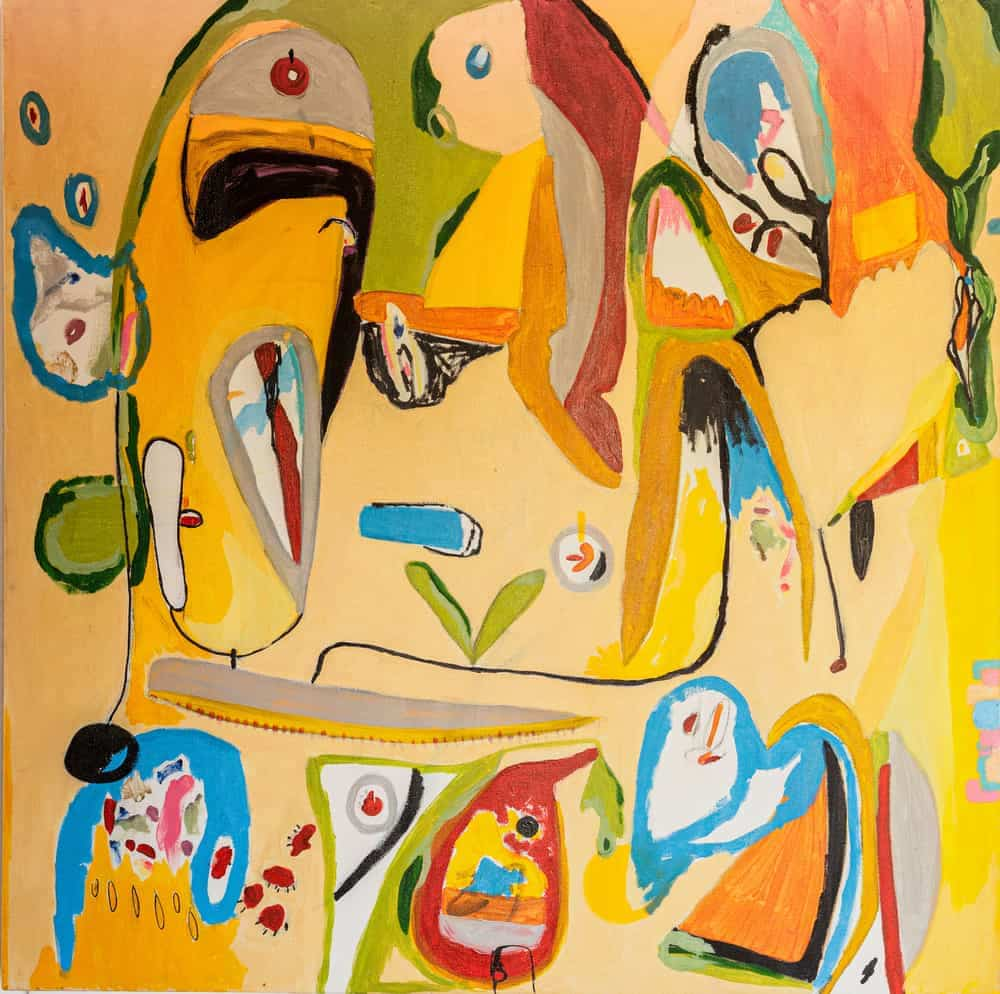

Mel, 2021
As I reflect on my journey, I can see the progression and growth from when I first started painting during those six months in Northern Ireland. Although I initially did it for fun, something shifted within me. When that project ended, I was invited to work as an art therapist in other countries, such as France, Spain, Portugal, and Morocco. I began planning my next steps, exploring opportunities to continue this work. Then, one day, I received a call from a family in India, inviting me to come and work there. It was a significant change because I come from a background that is traditionally not well-off, which has deeply influenced my work. In India, I found myself working with a wealthy family who provided me with a large apartment, four or five drivers, and six different cars. I had the opportunity to travel abroad extensively during my stay, visiting places like Vietnam and Sri Lanka while primarily focusing on art therapy to help their child. In India, I felt like my body was merging with my mind. This integration process was quite profound. I started having vivid dreams that seemed to play a significant role in this journey. Often, I'd wake up in the middle of the night, my mind filled with visions of India and Sao Paulo, along with a myriad of other things. I would write about these dreams and keep them in my mind as I could only release those feelings and thoughts once I painted.
At this point, I want to explain about a concept called 'perifuturism.' This term may not be widely recognized in English, but it's quite relevant in Brazil and Latin America. Perifuturism essentially stems from the idea of 'periferia,' which in Brazil can refer to areas like favelas. Favelas are often associated with poverty, but they also bring forth a unique perspective on art. It's not about creating art in the traditional sense that you might find in art academies or among privileged individuals who have access to resources and education. Perifuturism is about creating art from what you have on hand, based on the experiences and references available in your environment. It's contemporary and futuristic because it stems from unique experiences that only those who have lived in these circumstances can truly understand. In essence, the foundation of my work is rooted in perifuturism. Regardless of where I've lived, my background shapes my practice. I like to describe my work as 'error aesthetics.' It's about finding beauty in the unconventional, the strange, the uncommon, and the almost 'wrong' or 'erroneous.' I organize these elements in a way that creates a unique form of beauty, deviating from conventional expectations of what a beautiful or expected painting should be.


Ek Zaahida, Ek Faahisha, 2021
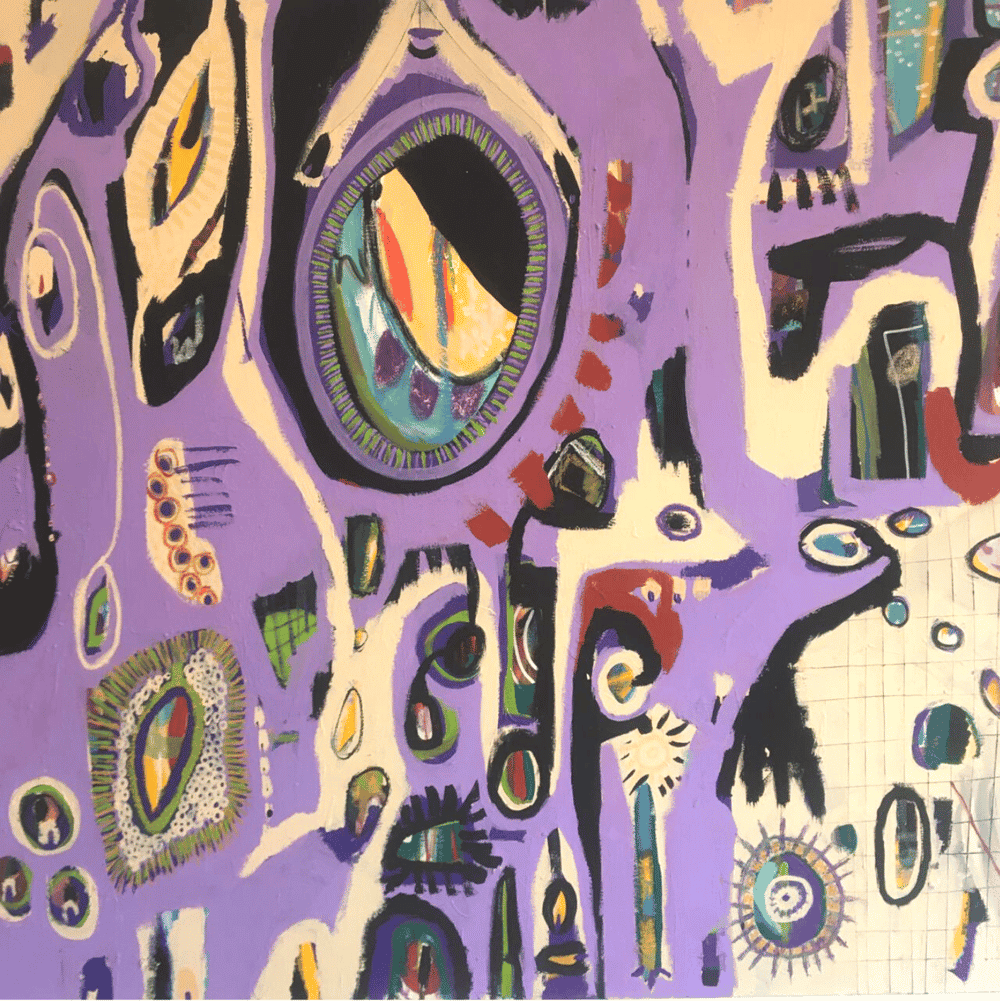

Deixando os porquês e encontrando refúgio no como, 2021
Currently, I've been using a lot of purple and blue in my work because it revolves around the concept of territory and belonging. Over the past decade, I've been constantly on the move, shifting between countries and cities. When I was in Northern Ireland, I experienced the cold weather and delved into creating shamanic portraits. In India, I focused on art therapy and play therapy with children on the autism spectrum. Now, I find myself living on an island, surrounded by the sea. It's called Isla de Boipeba, an indigenous name derived from a legend about snakes. Interestingly, in the past, people used to spot small turtles in the sea. These turtles would only poke their heads out of the water, and the indigenous people, initially fearful, would mistake them for snakes. This place is a sort of micro-society with just 3,000 inhabitants, truly a paradise. I've been living there for a year and a half now. My journey there started when I decided to explore my own country.
For the past ten years, I had been traveling extensively abroad, and I realized I didn't know much about Brazil. So, I headed to the northeast, which is radically different from the southeast, much like the diversity you'd find going from south to north in India. While I was in the northeast, a friend of mine suggested that I visit this island. Initially, I planned to stay for just three days. On my third day, I received some fantastic news I had been eagerly waiting for about a piece of artwork I was selling. It had finally sold, and I was overjoyed. I decided to go out and celebrate, making it my last day on the island. I was in high spirits, thinking everything was going superbly. That's when a friend of mine saw a picture on Instagram and insisted that I visit another place on the island. They said I needed to meet someone amazing there. So, I went to celebrate my painting sale, and I met this person my friend had introduced me to. It was an incredible connection, and it seemed like destiny wanted me to stay a bit longer. That one day turned into nearly two years of living on the island. I began to observe the incredible diversity of people and their ways of life. I realized that this contrasted sharply with my experiences in larger cities. Here, I started noticing that everything was intertwined with the sea and its salt. When you step onto the sand, the salt seems to permeate your body, making you feel connected to the land. Even the food you plant in the soil carries a hint of saltiness, and the water you drink and the air you breathe all seem to bear the imprint of the sea. It's as if salt is an omnipresent element that surrounds and shapes everything here. I began to pay close attention to the ambiance of the sea. I noticed how our bodies, minds, and thoughts react when we are in its presence. It's fascinating how our vibrations shift in this environment, and even my dreams began to change. I found myself dreaming frequently about the sea. During this time, I also developed a fascination with the color purple. To me, purple symbolizes fantasy, magic, and transcendence. It was interesting to me how these two elements, the sea and the color purple, intertwined in my thoughts and creative process.
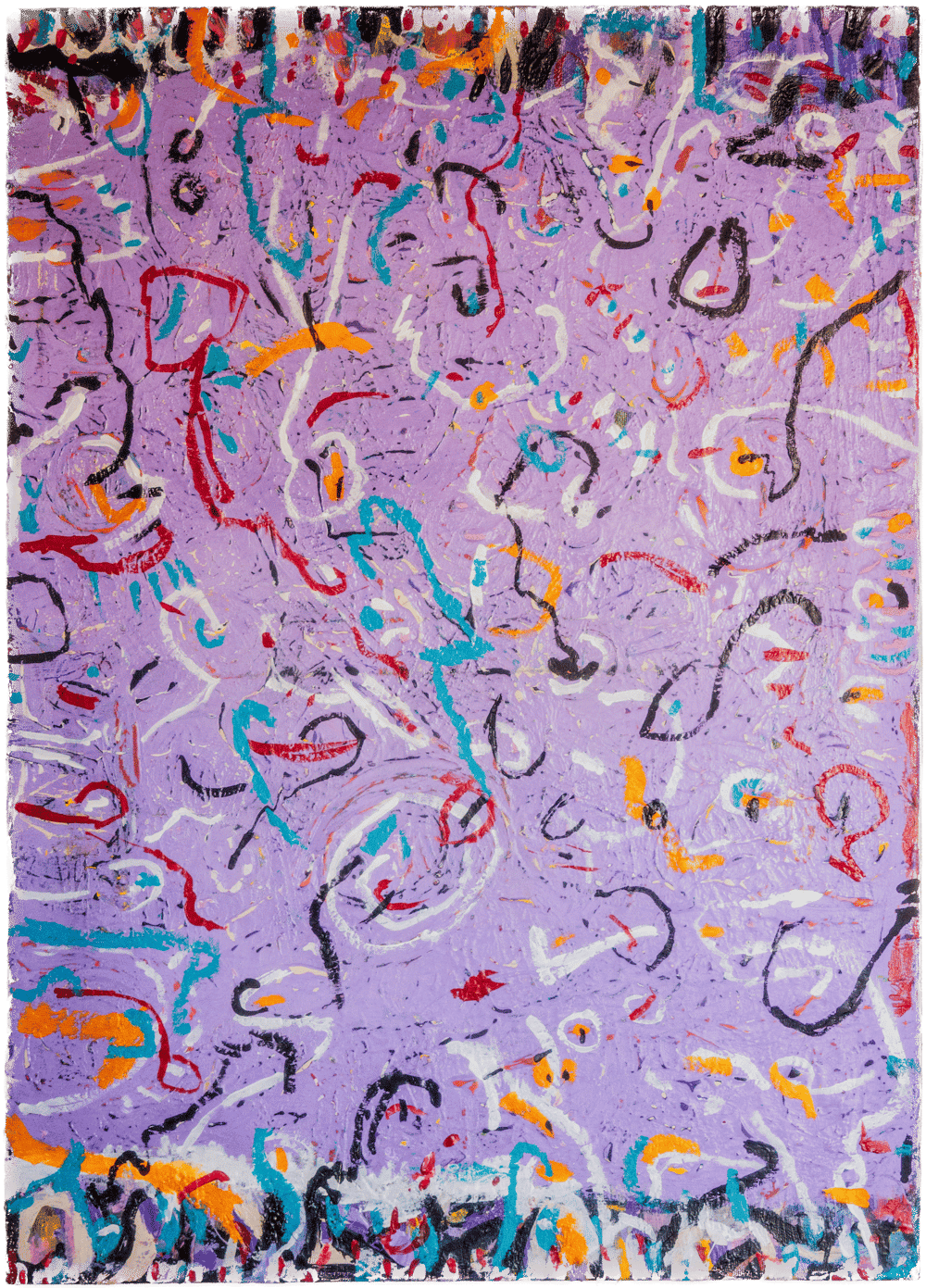

Miragem, 2023
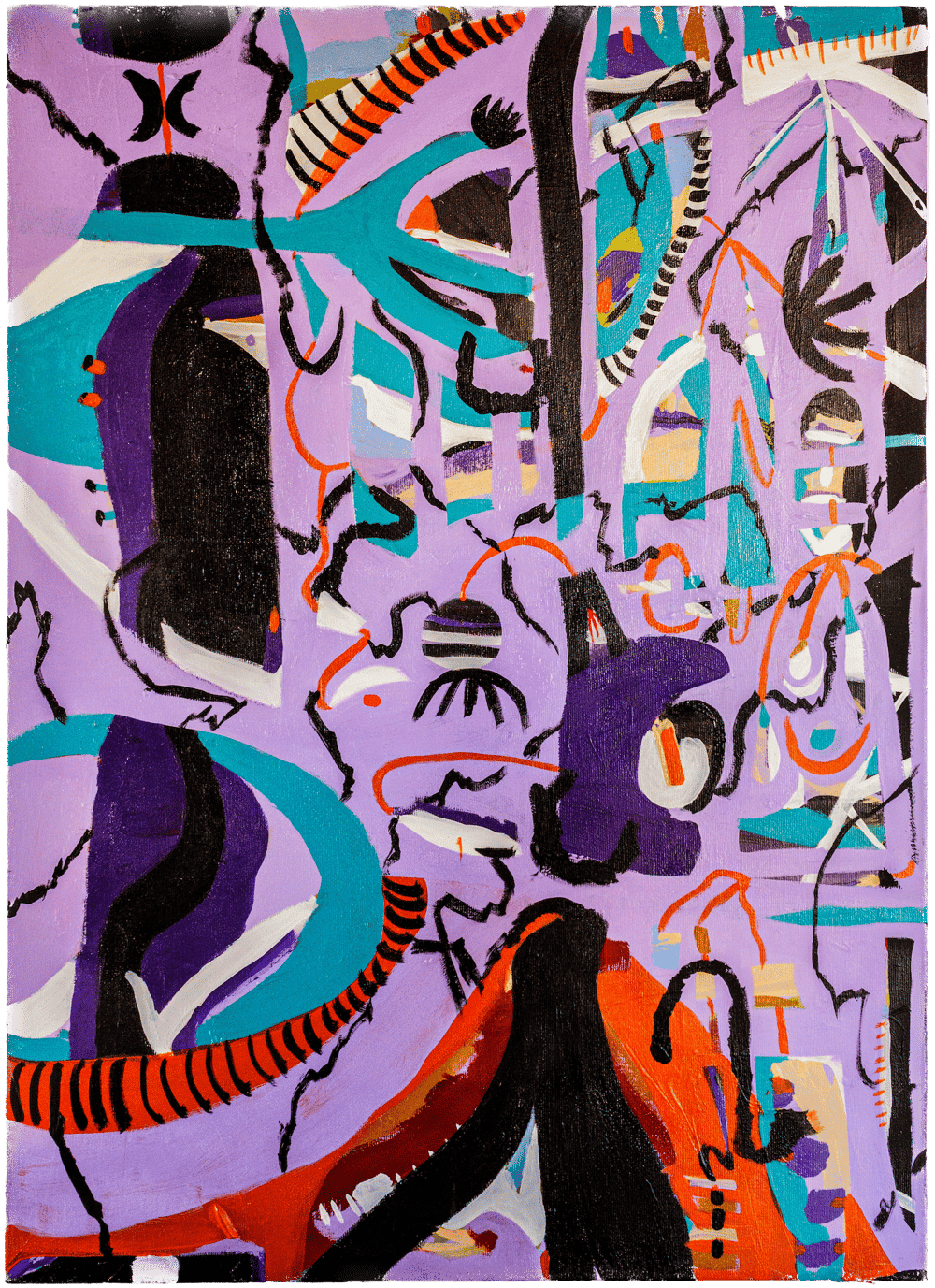

Éter, 2023
Even though I engage in various activities on the island, as it's a tightly-knit community, I've found that I can work in a more meaningful way there. I've been conducting research for my paintings, and I've even been involved in art direction for a literary festival. To top it off, I helped open a cafe. It feels like I've managed to make some of my dreams come true there, and I couldn't be happier.
- As told to Sanjana Srinivasan
Click here to view Gabriel's Online Viewing Room and learn more about their practice.

